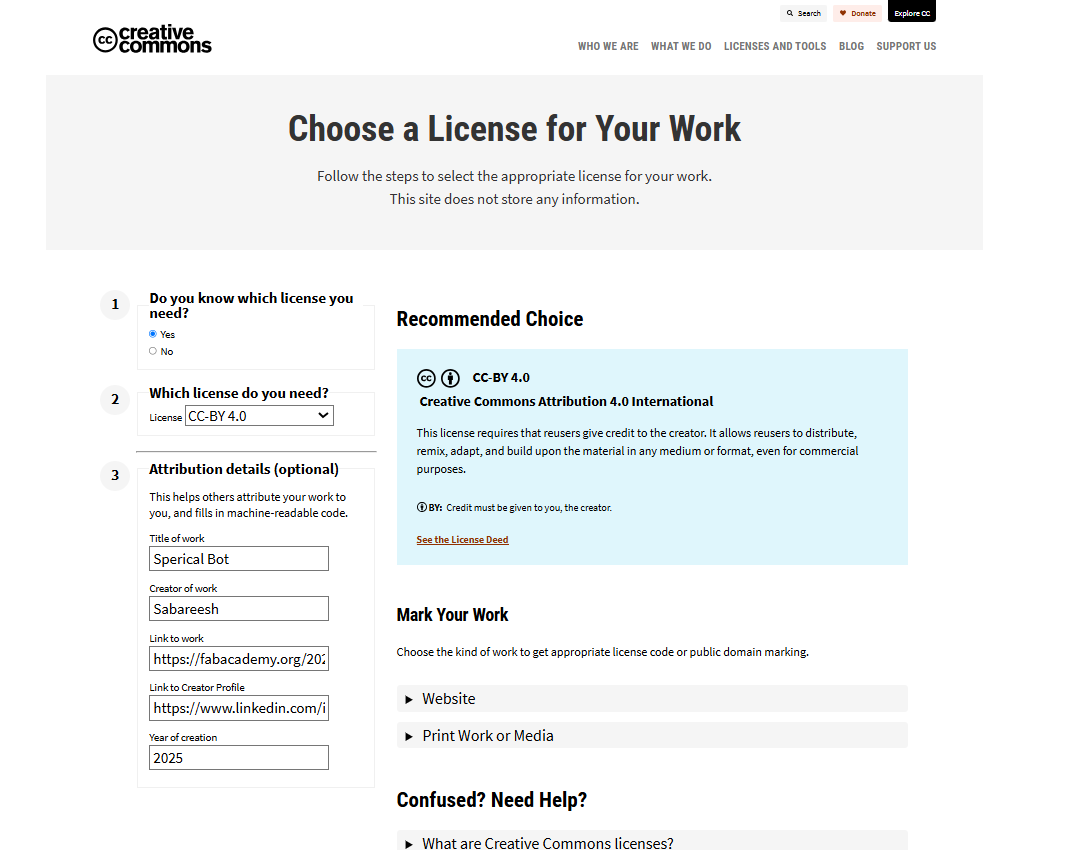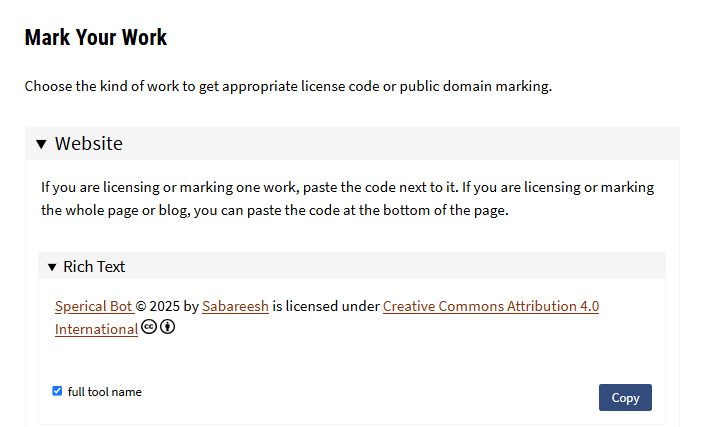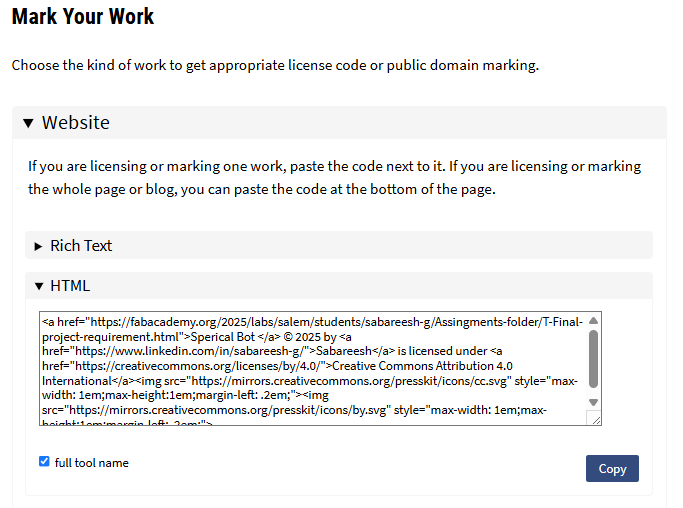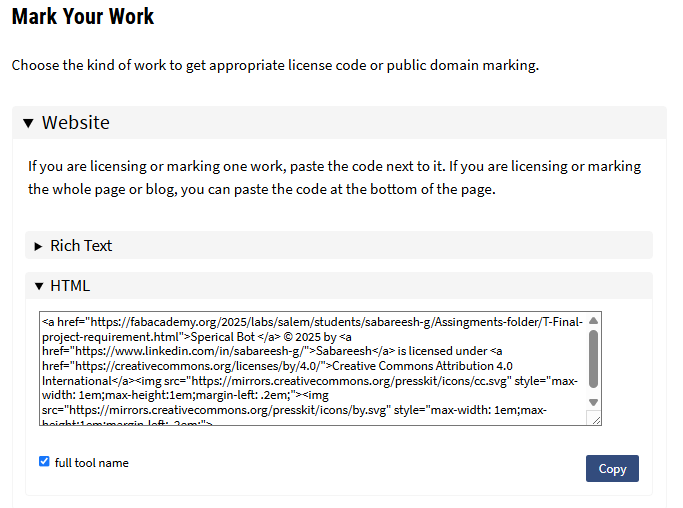As my final project, the Special Spherical Bot, nears completion, I’m excited about its potential to evolve into a versatile tool—especially in educational, research, and assistive robotics applications.
I believe the project will truly thrive once it begins to serve real-world needs through reliable wireless control and compact custom hardware.
As I explore ways to further develop this into a usable and accessible product,
I’m also considering how to protect it from unauthorized use.
Through this process, I’ve gained a deeper understanding of intellectual property—how ideas can be safeguarded through licensing, patents, or open-source frameworks.
To ensure clarity in my learning,
I have documented my objectives and insights on creative protection and the ethical sharing of innovations.
This journey has made me appreciate both the technical and conceptual dimensions of creation.
Intellectual Property (IP) refers to the legal rights that protect creations of the mind. These creations can include inventions, literary and artistic works, designs, symbols, names, images, and digital content. IP laws allow individuals or organizations to own their innovations or creative outputs in the same way they might own physical property. In the context of innovation, digital fabrication, and project development, understanding and applying intellectual property principles is crucial. It ensures creators have control over how their work is used, shared, or monetized — and also guides others on how they can legally reuse or remix someone else’s work.
Copyright
Protects creative works like books, music, software code, and designs. Automatically applies when the work is created and fixed in a tangible form.
Patents
Protect inventions and grant the inventor exclusive rights to make, use, or sell the invention for a certain period (usually 20 years).
Trademarks
Protect brand identity elements like names, logos, or slogans that distinguish goods or services.
Trade Secrets
Protect confidential business information (like recipes, algorithms, or methods) that give a company a competitive edge.
Open Source & Open Licenses
Allow creators to share their work freely with others under specific conditions. Examples include Creative Commons (for content/designs) and MIT or GPL (for software).
As part of my Fab Academy final project, I have chosen to freely share my work with the global maker and academic community. To do this, I am applying an open license that supports collaboration, learning, and reuse.
I have chosen to license my project under the Creative Commons Attribution (CC BY 4.0) license. This is one of the most open licenses available under the Creative Commons framework.
What This License Allows
Application of IP in My Project
Creative Commons is a nonprofit organization that enables the sharing and use of creativity and knowledge through free legal tools. Creative Commons licenses help creators legally share their work while retaining certain rights. These licenses allow others to copy, distribute, remix, adapt, and build upon the work—depending on the terms chosen by the original creator. It encourages open access, collaboration, and innovation across a wide range of fields including education, art, and technology.


Here, I have added all the necessary details required under the Creative Commons license

Sperical Bot © 2025 by Sabareesh is licensed under Creative Commons Attribution 4.0 International


Sperical Bot © 2025 by Sabareesh is licensed under Creative Commons Attribution 4.0 International. To view a copy of this license, visit https://creativecommons.org/licenses/by/4.0/